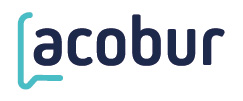
- 24/01/2019 09:27:49
- Fuente original
Fuente original
Creating and Sustaining Best Practices in Launching Biosimilars
Before launching into a discussion of what firms need to consider when identifying “best practices” to get a biosimilar up and running in a new market, Mylan’s global commercial head for biologics and insulin gave a quick history lesson about how far the field has come in a keynote address at the 14th Biosimilars Summit, held January 22-23, 2019, in Alexandria, Virginia.
However, despite the advances that have been made—such as getting past issues of CMS coding and the Supreme Court ruling that changed the interpretation of the 180-day notice manufacturers have to give—it is still a turbulent, a constantly changing field, and there is no one-size-fits-all strategy, said Chrys Kokino. Price and competition pressures are real, especially in Europe, where prices are falling.
“If you know one country in Europe, you know one country,” said Kokino.
Mylan, which focuses on partnership agreements, launched Hulio, the adalimumab biosimilar referencing Humira, with Fujifilm Kyowa Kirin Biologics last year after receiving approval from the European Commission. Hulio is not the only biosimiliar adalimumab on the market in Europe. AbbVie, Humira’s maker, has already lost patent exclusivity in Europe, allowing competitors to enter.
Although approvals are centrally managed in Europe, individual governments negotiate reimbursement. Kokino said there are complications to every market entry, in terms of trying to provide access and affordability to patients while appeasing concerns from stakeholders, shareholders, and top executives.
“There’s a tremendous amount of investment that has to take place,” he said.
Collectively, those in the biosimilar industry must decide what their ultimate objective is, he said. Mylan has a portfolio of 20 biosimilars in 5 disease categories and has the objective of building a sustainable business over time, he said. But Kokino noted that there are at least 4 areas to consider when thinking about entering a biosimilar market: partnerships, market dynamics, research and development, and the commercial launch.
Not every manufacturer is deciding to stay the course, he noted, pointing to, as just one example, Merck deciding to end its partnership with Samsung Bioepsis for a follow-on to Lantus. And Pfizer decided to drop 5 preclinical programs. Mylan, however, is pushing forward with a decision to build a factory in Malaysia just for insulin products.
To stay in the market, though, means putting patients at the center in terms of access and affordability. He said it requires a “very fine balance” of multiple stakeholder objectives. In addition, he said the entry of new competition means that views on existing relationships with stakeholders may change.
Kokino stressed that he wasn’t passing a judgement on which was the better strategy—to stay in the market, trim, or sit on the sidelines and wait until, as he put it, “until the dust settles.”
While it is his hope that biosimilars become mainstream, it will require a massive educational effort. To that end, the industry has to make sure they are represented at medical and scientific meetings as well as in peer-reviewed journals, editorials, and review articles, he said.
Leer el artículo original completo

